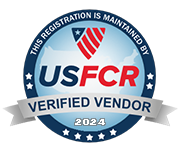- Overview
Here’s the understatement of the year: work has changed. And amidst unprecedented labor shortages and the so-called “Great Resignation,” employers are wise to accommodate changing workforce preferences to boost recruitment and retention efforts. But as hybrid models take the lead in shaping the future of work, many executives don’t feel prepared to support the operational shift. In a recent survey by Riverbed and Aternity, only 32% indicated that they were “completely prepared” for a transition to hybrid work. Among other challenges, leadership faces new complexities in digital and physical access management that threaten both the employee experience and a company’s overall security posture. Let’s review how work is changing, what it means for physical access and security – and what you need to look out for as you prepare to implement a hybrid model.
Why hybrid?
After the seismic shifts prompted by the events of 2020, most offices are unlikely to return to their former in-person operational model. For one thing, it’s not what people want. According to Microsoft’s 2021 Work Trend Index, 73% of respondents prefer the option of remote work. While some companies have made the plunge into a 100% remote format, many hope to retain some of the in-person elements that help to shape company culture – and that also capitalize on existing investments in physical infrastructure. Tech giant Google, for example, known for office perks such as catered meals, coffee bars, nap zones and more, announced plans for the majority of employees to eventually adopt a hybrid work week, spending three days in the office and two working wherever they choose.
More and more executives are coming around to the idea of hybrid work moving forward. 97% of respondents to the Riverbed and Aternity survey indicated they would be comfortable with a long-term hybrid model. Last year, that number was at 30%.
Make productivity and security go hand-in-hand in the hybrid environment.
As more companies get on board with the idea of a hybrid work model, they face new challenges in making the experience seamless for employees. Many are also concerned with the new security risks introduced by managing so much IP digitally. But as potential cybersecurity weaknesses take center stage, let’s not forget about the gaps created from a physical standpoint.
The solution: Identity and digital credentialing technology that opens doors to a safer workplace. Click below to see what the process could look like for employees transitioning from working 100% remotely to returning to work at the corporate office.
Things to Consider
In a hybrid model, employees will need to shift back and forth from digital and physical workspaces on a regular basis. That means you need to make sure employees can access both, safely and securely. Linking physical and digital forms of employee identity facilitates the switch – and decreases vulnerabilities from a security standpoint.
Many hybrid models leave it up to the employee to determine which days they will spend at home and which they will be at the office in order to preserve a sense of flexibility and accommodate individual scheduling needs. And even with set schedules for remote and in-person work, the typical Mon-Fri, 9-5 access schedule becomes much more fragmented.
As a result, the physical access needs of salaried employees begin to more closely resemble those of shift workers. At the same time, many organizations are looking to increase their visibility and tracking capabilities to ensure worker safety in the fight against COVID-19. Managing and tracking physical access for every employee in the hybrid environment is challenging for any security team, but particularly complex for companies with a large staff and multiple locations.
Because legacy physical access control systems lack the capacity to manage large scale changes to individual cardholder work schedules, security teams who want to create more tailored physical access policies have had to tackle them by hand, creating multiple reports. The system limitations, coupled with overwhelming manual requirements for managing access, lead many security teams to simply assign 24/7 access for each cardholder – the least secure option.






